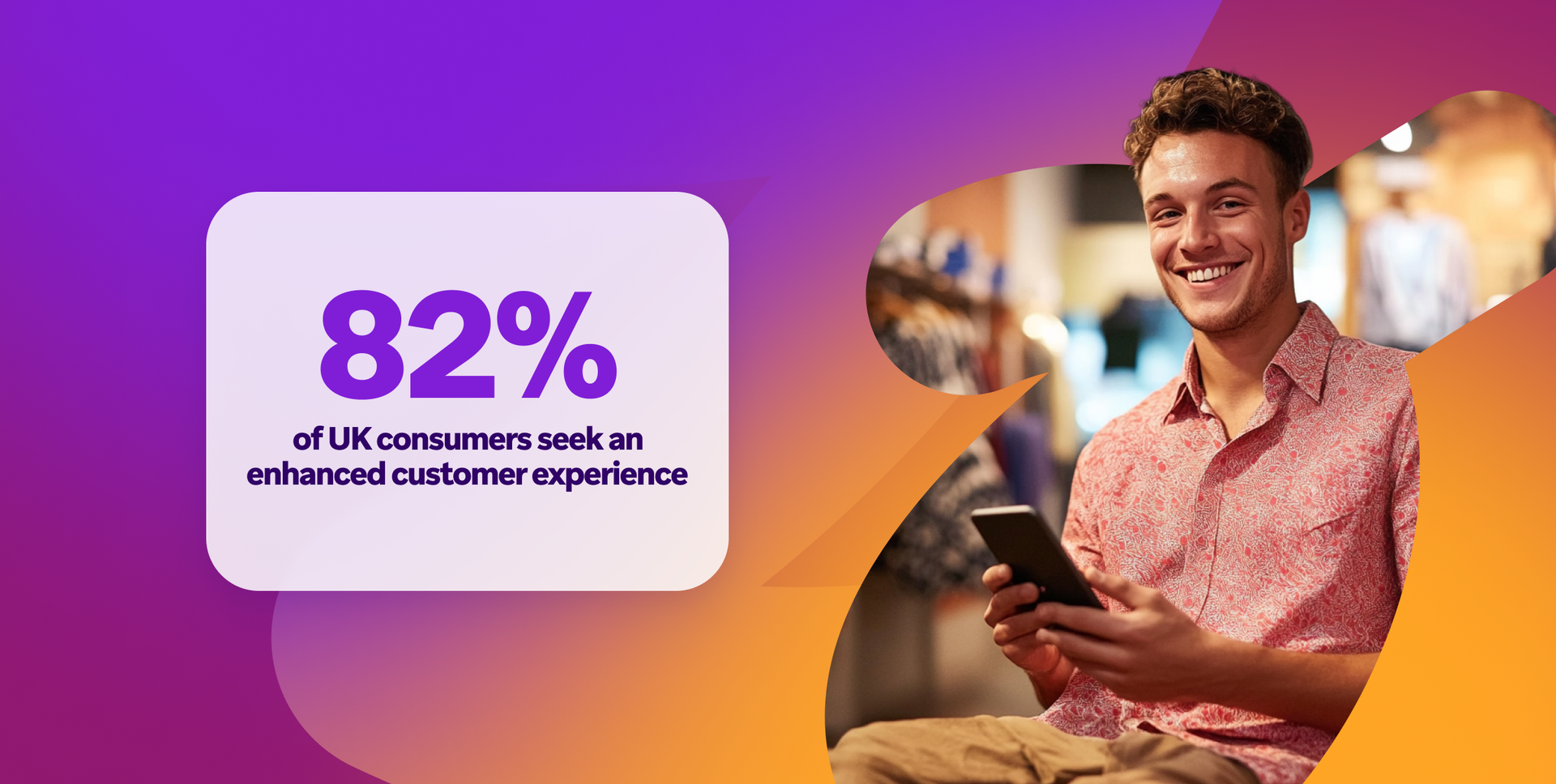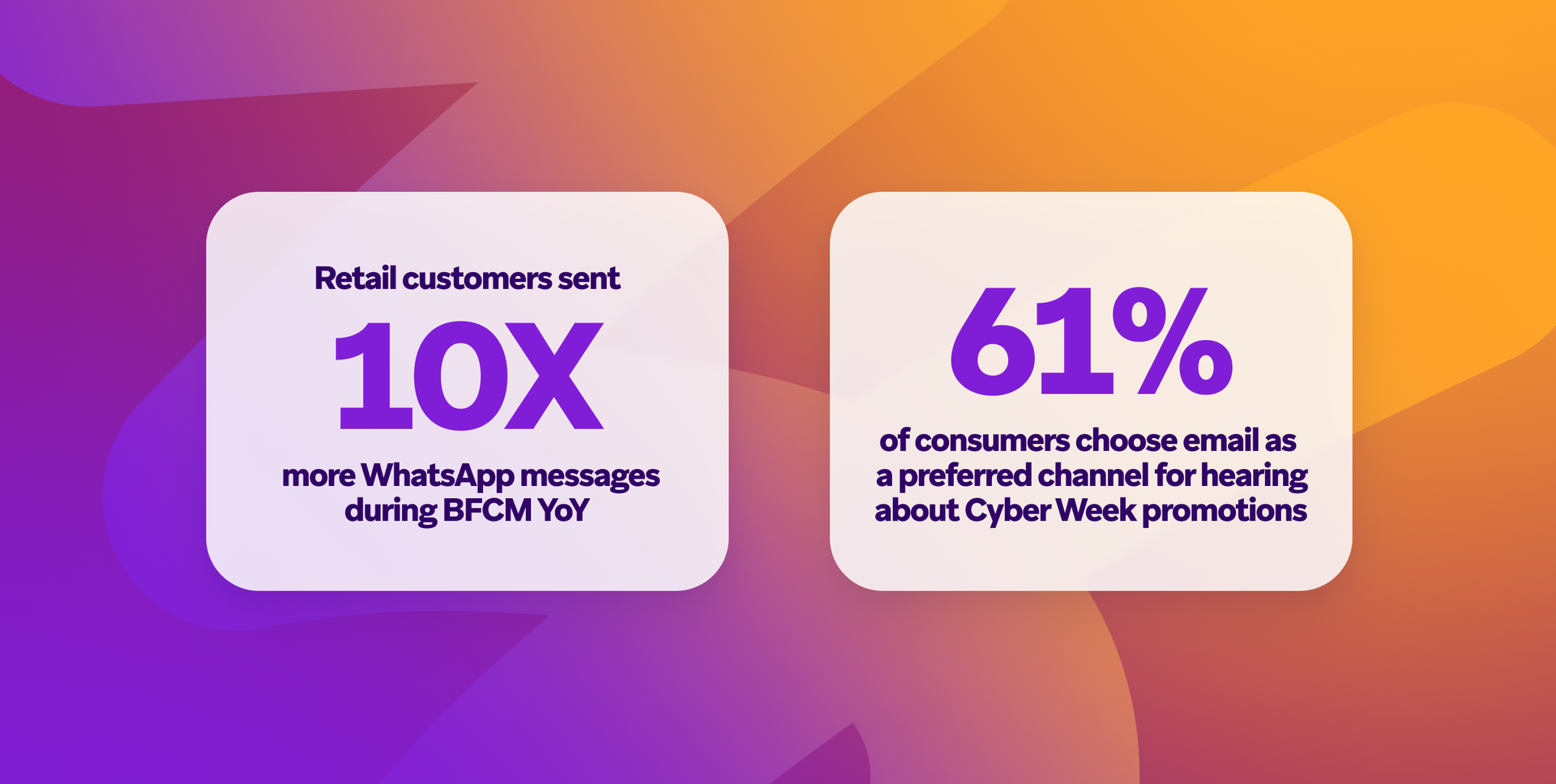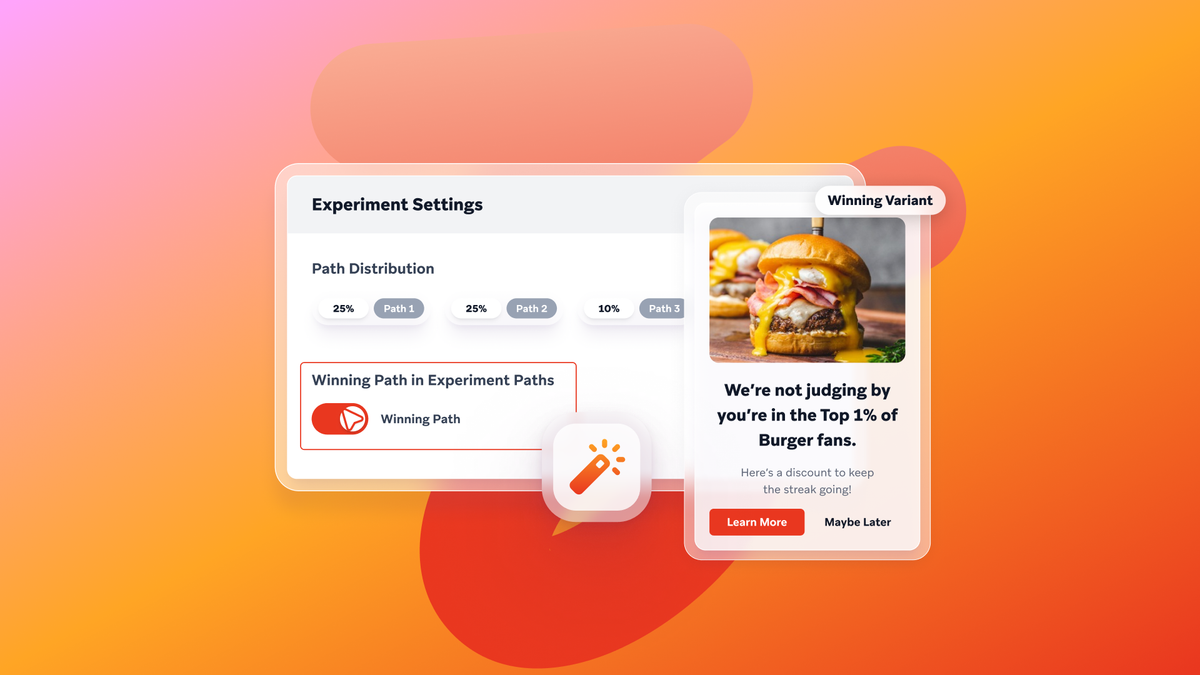Elevated Shopping Journeys Will Be Essential for Retail in 2025: Lessons from Black Friday/Cyber Monday
Published on December 12, 2024/Last edited on December 12, 2024/11 min read


Sam Miller
Strategic Business Consultant, Braze
Aparna Prasad
Senior Product Marketing Manager at BrazeThe Black Friday/Cyber Monday (BFCM) shopping period is a major event for consumers and retailers alike. Consumers hunt for the best deals, not just for gifting but also for items they’ve been eyeing all year long. And for the vast majority of retailers, their performance during this time period often makes or breaks their financial performance for the year. During the four-day BFCM period this year, brands using Braze sent more than 50 billion messages, giving us a unique data-driven perspective on key trends and best practices for retailers to be mindful of as they plan for 2025.
After reviewing the results from this year’s BFCM period, our key takeaway is this: Brands are increasingly investing in sophisticated customer journeys to better reach, engage, and monetize their audiences. We believe that this strategy will only continue and that retailers need to focus on elevating the shopping experience in 2025 to stay competitive. (Don’t just take our word for it: According to Shopify, 82% of UK consumers seek an enhanced customer experience.)
Think about the brands who seem to understand you deeply: They send you messages with content you’ve been waiting for, they understand how you prefer to shop, and you can recognize their messages anywhere, on any channel, because of their consistency and value. This is an elevated shopping experience—one that significantly improves the overall customer journey before, during, and after a purchase. By going beyond basic expectations through personalized interactions and creating cohesive campaigns across marketing channels, retailers can provide a better customer experience and stay ahead of the curve in a competitive market.

For retailers, knowing that you need to deliver elevated experiences for consumers in 2025 is just the first step. To thrive, it’s important to understand what elevated experiences really look like today and what it takes to make them a reality. Read on for a breakdown of four key trends we observed during BFCM 2024:
1. Connected and coherent journeys across channels are tablestakes
Today’s consumers expect a consistent experience across all the channels they’re active on, whether they’re shopping on a website, through a mobile app, or in-store. To execute on cohesive campaigns, marketers need to bring together all the data they have about their customers' preferences and behaviors, across their mobile and web properties, their point-of-sale (POS) systems, surveys/feedback forms, etc. When brands have this kind of visibility, they can create a level of true consistency across their channels, making it much easier to create campaigns that feel relevant, authentic and match customer expectations.
As in-store shopping regains a key role in a consumer’s journey, retailers must recognize the importance of a seamless cross-channel shopping experience that bridges the gap between online and offline touchpoints. According to Ryder’s The Influence of Omnichannel Excellence on Consumer Behavior, “61% of shoppers hit the stores because they like trying things on, seeing products in person, and comparing them side by side.” With nearly two-thirds of shoppers preferring going into physical stores, retailers with brick and mortar locations must be able to stitch the in-store experience seamlessly together with the online one, supporting that their value proposition and message remains the same across experiences
What does that look like in practice? A retailer could collect data on consumers who come into the store primarily to purchase shoes, and target them with offers and deals focused on new shoeware lines. Whether a retailer thinks in terms of cross-channel, multi-channel, omni-channel or “Unified Commerce,” what remains the same is a desire to move from siloed, disparate, and static experiences to connected, dynamic journeys across touchpoints.
This desire was reflected in the brands using Braze to power their messaging campaigns during the BFCM period. 76% of all messages sent by Braze retail customers aiming to drive purchases were multi-channel, up 23% from last year, signifying the growing importance of coordinated, cross-channel journeys to brands looking to provide an elevated shopping journey. As retailers look to 2025, it will be imperative for them to adopt customer engagement platforms capable of supporting these sorts of coherent, connected customer experiences.
2. Email is still in, but keep your eyes on WhatsApp as well
Taking a closer look at some channel trends, BFCM 2024 signified that email has not gone out of style for retailers; in fact, more than 61% of consumers choose email as a preferred channel for hearing about Cyber Week promotions, making it a top channel for retailers and customers alike.
Digging deeper into how our email platform was used, we wanted to determine how marketers created high-quality content during this busy period. We found that they turn to tools that make email creation easier: Our Drag-and-Drop Editor for Email was used by 53% of our customers and 37% used the Email HTML Editor. This, coupled with the message volume increase, helps show how Braze customers are sending more messages than ever before with increased ease-of-use.
Retailers aren’t just focusing on established channels: We also saw a rise in emerging channels like WhatsApp, as brands continue to adopt them to meet customers where they are. WhatsApp is a newer channel for B2C marketing, but it is quickly becoming known for its high engagement rates and unique ability to support rich, conversational experiences. For retailers aiming to reach global audiences, WhatsApp is key as it boasts 2 billion monthly active users worldwide.
The channel is quickly catching on amongst retail and eCommerce marketers looking for more dynamic ways to show off their products and services. In fact, Braze retail customers sent 10X more WhatsApp messages during BFCM 2024, compared to last year. As brands learn from this year’s channel trends and examine where their audiences are engaging, we believe they must keep their eyes peeled for new channels that they can potentially use to engage with their customers—while still taking full advantage of the more traditional channels at their disposal.

3. Personalization with purpose is key
Personalization continues to be an opportunity for retailers to meet consumer expectations. However, Deloitte Digital noted that consumers recognize just 43% of their experiences as personalized, signifying that retailers still have work to do in this area.
When we think about personalization in a modern shopping journey, it’s not just about superficial tailoring. Instead, the aim is to strengthen and augment the shopping journey. Speeding up the journey to purchase by narrowing choice, is a prime example. This is something consumers crave, with 63% of consumers wanting to get from inspiration to purchase as quickly as possible. Braze AI Product Recommendations helps marketers do exactly this, as it is designed to tailor content, recommendations, and more to create relevant interactions for every unique customer—all at scale.
In addition, retailers need to prioritize building stories that inspire shoppers with products that are relevant specifically to them. Consumers want inspiration campaigns to understand their previous purchases and build on them to ‘complete the look’ or recommend complementary products that can boost results.
Elevated experience imperative aside, getting it right is good for business. For example, Braze email customers who use features like Liquid personalization in their emails see a 63% increase in open rates and a 23% increase in conversion rates. When we turn to consumers, nearly 75% of consumers say they're more likely to purchase from brands that deliver personalized experiences.
The key personalization challenge for retailers isn’t new, but is getting more complex as brands grow, and as customers send out more signals than ever. Customers expect messages in real time that connect specifically to actions they’ve taken. For brands that reach millions of customers, dynamically personalizing messages at scale becomes a hurdle. Retailers should lean into tools that assist with real-time segmentation and platforms which send messages with low to zero latency. Dynamic personalization tools such as Connected Content can support continuously updated information—copy, images, and more—that can be inserted into push notifications, emails, in-app messages, or banners, in order to provide customers with a more responsive, relevant messaging experience at scale.
4. Retailers should continue to use AI to their advantage
AI continues to rise in awareness and we are starting to see AI have a genuine impact on shopping journeys. In fact, retail and eCommerce marketers are more likely to favor the usage of AI (85%), compared to marketers in other industries. AI can have significant impacts for key customer engagement tasks for retailers, with Generative AI taking on creative and copy tasks or Agentic AI (where an AI “agent” can act autonomously to make decisions) supporting content testing and delivery on a scale that simply would not be possible for a human to deliver.
Yet there remains the question for many retail and eCommerce brands about how to add AI into marketing plans and workflows. It’s no wonder that you see stats like this one: 70% of UK retailers face a skills gap around AI.
At Braze, we’re focusing on supporting brands to use AI in service of enhancing the shopping experience and helping create elevated experiences in an easier and less resource-intensive manner. This year, we saw feature usage increase across our AI feature suite, including a 43% increase in retail customers using the AI Copywriting Assistant to kickstart their creative process, and more notably, a 63% increase in retail customers using the Predictive Suite to create targeted audiences of shoppers based on their likelihood to make a purchase or churn.
Leveraging these AI tools can improve the positive impact of retailers’ messaging campaigns. For example, brands can lean into the Predictive Suite to define what churn means for their business, identify the users they’d like to prevent from churning, and then target them with specific messaging. This rise in usage indicates that marketers are leaning into GenAI tools to help with productivity, but also leaning into machine learning as they scale. AI will continue to be a key facet of 2025 plans for retailers, and they should keep weaving this technology into their campaign creation processes as they grow.
That’s a Wrap
As we look back on this year’s BFCM period, what’s clear is that the shopping experience has already started changing for many brands in 2024 and that retailers today are facing significant challenges as they navigate a complex and rapidly evolving landscape. In what appears to a critical tipping point, we see the following:
- Highly personalized experiences that feel like 1:1 interactions are tablestakes; consumers demand tailored recommendations that cater to their individual preferences.
- At the same time, there is an explosion of messaging channels—in connection with web, mobile, social media, and physical stores—that requires seamless integration and consistent messaging across all touchpoints to create the coherent journeys that customers crave.
- The rapid advancements in technology and AI add another layer of complexity, as retailers must constantly adapt to new tools and platforms to stay competitive, all while managing the rising pressure to deliver exceptional customer experiences.
As retailers juggle these challenges in order to elevate shopping experiences into this year and next, Braze is committed to helping marketers embrace their role as stewards of customer relationships. With the right technology and tactics, retail and ecommerce brands can see higher customer lifetime value and lower acquisition costs, resulting in deeper loyalty and stronger business growth.
If you want to hear more about how to plan for BFCM in 2025 or retail trends, join our Retail & eCommerce community and look out for the next blog in this series early in the new year.
Forward Looking Statements
This blog post contains “forward-looking statements” within the meaning of the “safe harbor” provisions of the Private Securities Litigation Reform Act of 1995, including but not limited to, statements regarding the performance of and expected benefits from Braze and its features and products. These forward-looking statements are based on the current assumptions, expectations and beliefs of Braze, and are subject to substantial risks, uncertainties and changes in circumstances that may cause actual results, performance or achievements to be materially different from any future results, performance or achievements expressed or implied by the forward-looking statements. Further information on potential factors that could affect Braze results are included in the Braze Quarterly Report on Form 10-Q for the fiscal quarter ended October 31, 2024, filed with the U.S. Securities and Exchange Commission on December 10, 2024, and the other public filings of Braze with the U.S. Securities and Exchange Commission. The forward-looking statements included in this blog post represent the views of Braze only as of the date of this blog post, and Braze assumes no obligation, and does not intend to update these forward-looking statements, except as required by law.
Related Tags
Releated Content
View the Blog
AI A/B testing: Smarter experiments for real-time marketing optimization
October 30, 2025
How AI capabilities in Braze scale growth for financial services
October 29, 2025
Braze named one of America’s Greenest Companies 2026 by Newsweek
